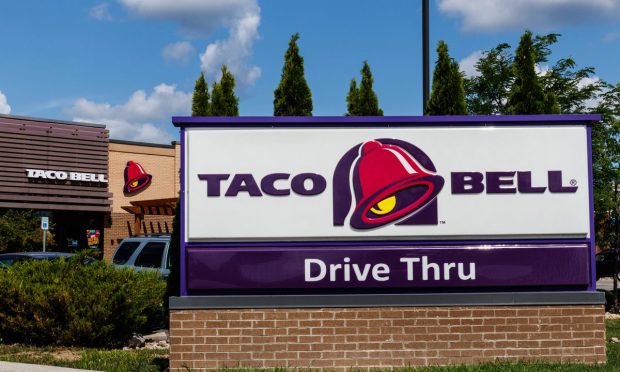Taco Bell Loyalty Program Increased Active Customers’ Spending By 35 Pct

Yum! Brands’ digital investments are paying off. The company, parent of major quick-service restaurant (QSR) brands KFC, Pizza Hut and Taco Bell, as well as fast-casual chain The Habit Burger Grill, announced Thursday (July 29) that company-wide digital sales for the second quarter of 2021 exceeded $5 billion. This marks a 35 percent increase over Q2 2020, when consumers were beginning to flock to digital ordering to meet their quarantine meal needs.
Also increasing 35 percent is the spending of active customers using Taco Bell’s loyalty program relative to their spending before enrolling in the program.
“The Taco Bell U.S. launch of our Taco Bell Rewards program in 2020 has continued to grow digital sales for the brand,” Yum! Brands CEO David Gibbs said on a call with analysts. “We’re incredibly excited by the early results from the program and the future growth opportunity that remains. We’re seeing significant uptick in frequency and higher spend per visit, leading to an increase in overall spend of 35 percent for active customers in the Taco Bell rewards program compared to their pre-loyalty behavior.”
The program rewards a set number of points per dollar spent, personalizing offers and messaging to each user. Overall, Taco Bell’s same-store sales grew 21 percent over 2020 during the quarter, 12 percent above 2019’s pre-pandemic sales.
“Loyalty is a huge part of our [digital initiative],” Zipporah Allen, Taco Bell’s then vice president of digital experiences (now chief digital officer) told PYMNTS in an interview last July. “We know that when customers are shopping for a digital experience, they want a one-on-one, personalized experience, and loyalty [programs] lay the foundation for that.”
To that point, the chain continues to redesign its restaurants to accommodate the rise in digital ordering, pushing its Go Mobile restaurant concept, a smaller footprint with a mobile order-ahead pickup drive-thru lane in addition to the traditional drive-thru lane, with curbside pickup options, and other digital-physical integrations.
Regarding the drive-thru channel, Yum! Brands CFO Chris Turner noted that Taco Bell “served 4 million more cars compared to the same quarter last year,” adding, “The drive-thru experience is an increasingly critical competitive advantage for our brands.”
Of course, drive-thru is not the only process being streamlined by Yum Brands digital upgrades. The company has been on a tech investment spree, acquiring companies and developing tools that streamline everything from its order placement process to its delivery tracking tools to its marketing.
“It’s really hard to single out which part of the business is going to benefit most from digital, because all of our brands are very rapidly becoming digital brands,” said Gibbs. “You’re seeing that in the numbers … it is both a U.S. and an international play, and it’s widespread, and we do think it can fuel the business for a long time to come.”
That being said, there is one story that the numbers very clearly told — the company’s top sales growth came from KFC. The fried chicken chain’s same-store sales rose 30 percent, compared to company-wide same-store sales increase of 23 percent. At the bottom of the barrel was Pizza Hut, which saw a significantly lower increase of 10 percent.
Discussing KFC’s success in the U.S. market, Gibbs highlighted the return of catering occasions, the company’s investments in its ecommerce platforms (including replacing third-party ordering channels with an internally built mobile app and desktop site), and of course the popularity of the chicken sandwich. He noted that the sandwich “performed exceptionally well,” even in the face of competition from all sides, adding that the sandwich gives the brand “a solid platform to drive additional sales layers in the future.”